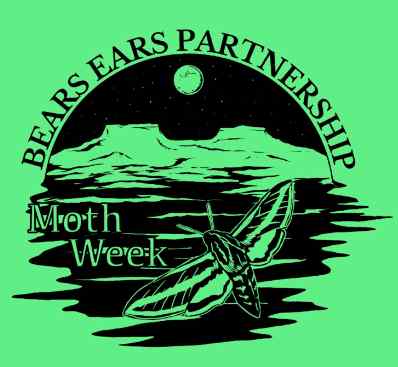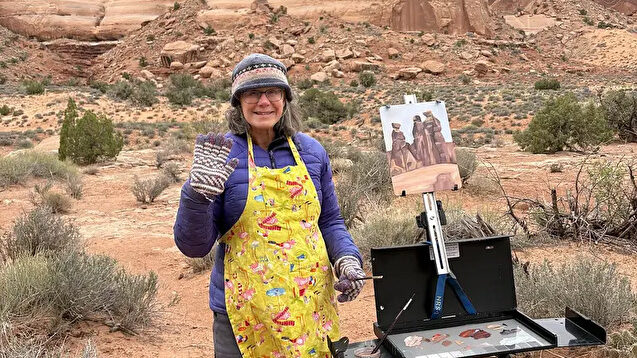Some information may be outdated.
Join a citizen-scientist effort to track and identify the nocturnal pollinators
Nature enthusiasts can stay up late this week while contributing to science with the Bears Ears Partnership’s Community Science Moth Count.
National Moth Week runs from July 20 through the 28 this year, and together with the Utah Pollinator Pursuit, the Partnership is organizing regional citizen scientists to help count these nocturnal pollinators.
Ricky Begaye, volunteer manager for the Partnership, said that while butterflies might be more visible to us during the day, there are over a hundred thousand identified moth species. 500 have been identified in Utah, but since they are active at night and have excellent camouflage, that’s likely an underestimate.
“We’ve been doing a lot of organized butterfly counts around the area—and people can still contact me to count butterflies—but this is a great way to help us collect data on what moth species are here,” Begaye said.
Over time, he said, the collected data can also shed light on changing migratory patterns—showing what species might be moving due to a changing climate.
To launch the week and prepare everyone to collect scientific data, an online kickoff webinar is scheduled for Saturday, July 20 at 5 p.m.
Begaye will be joined by Amanda Barth from Utah State University. The two will talk about moth science and tips on how to participate in the Moth Count. The webinar will be recorded and posted on the Bears Ears website as well.
Registration for the kickoff is free and can be found at https://bearsearspartnership.org/events/public-events/moth-week
To participate, you can head to a designated site in the Bears Ears area with Begaye or set up your own moth observation station. Setting up your own station is as easy as setting up a bright light shining on an old bedsheet or other light-colored surface. Moths will be attracted to the light and land long enough for you to snap a photo.
“Collecting moth data is a sit and wait game,” Begaye said. “It’s fun to play with a black light and stay up to 11, but once your station is built it’s up to the moths to show up.”
Keeping track of the location, quantity, species, date and time you collected your moth photos will help expand our scientific knowledge of how many moths are in the Colorado Plateau.
“It’s really cool to find out what moths live around your house, their proper names,” Begaye said.
You can also upload your data to the Moth Week page on the app iNaturalist to be collected, or email Begaye directly at ricky@bearsearspartnership.org with the moth type, location, date, and time in your email subject line.
Learn more and register at https://bearsearspartnership.org/events/public-events/moth-week
Appreciate the coverage? Help keep local news alive.
Chip in to support the Moab Sun News.





